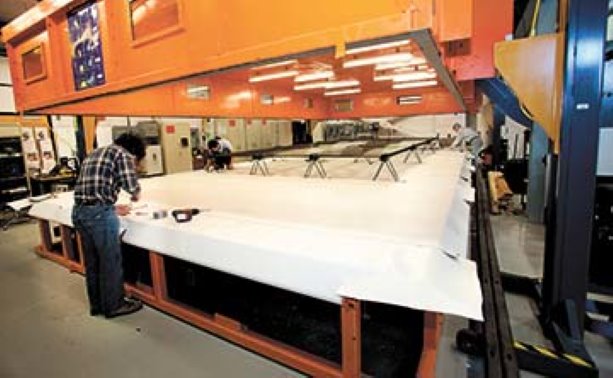Roofs are performing double duty for an increasing number of applications, from cell phone towers to photovoltaic (pV) modules, pavers, vegetative cover and even wind turbines. Designing such roofing systems effectively under unique applications demands a fresh look at the effects of wind uplift — the ability of wind to infiltrate underneath roofing systems, or to create negative pressure underneath these systems through external suction.
In recent years, the National Research Council Canada (NRC), in collaboration with the Special Interest Group for Dynamic Evaluation of Roofing Systems (SIGDERS) has investigated low-slope roof assemblies for wind uplift performance in light of these applications.
Bas Baskaran, group leader, Building Envelope and Materials with the NRC is currently researching the effects of wind on building envelopes. Some recent studies in which he’s been involved demonstrate how specific rooftop add-ons influence the performance of roof systems under wind conditions.
Related:
National Research Council web wind tool helps with roof design
How the Calgary construction industry is improving its understanding of wind
The studies employ the NRC’s Dynamic Roofing Facility in Ottawa, a chamber that simulates the effects of wind on actual roofing systems and installations.
In one test, concrete pavers, which are used to provide resistance against wind uplift, were interconnected with H-clips and applied over two different modified bitumen membrane systems. One roofing system featured a steel deck and plywood, and the other consisted of a poured-in-concrete composite deck.
The steel and plywood system failed at a wind suction pressure of 125 pounds per square foot (psf) with metal plates and fasteners pulling through the support board and causing delamination of the membrane. The concrete pavers themselves were lifted when roofing components failed, although they settled back into position without damage.The air-sealed concrete deck with pavers withstood wind suction pressure greater than 270 psf.
In another test, a dozen pV modules were interconnected using polymer clips to form an array supported by legs and placed loose on top of a thermoplastic membrane system. At a maximum test pressure of 60 psf, the clips used to integrate the modules cracked and the movement of the leg supports caused damage to the waterproofing membrane.
Current research is evaluating vegetative roof assemblies (VRAs).
“We’re not only talking about the vegetative systems but the combination of the vegetative systems and the roofing systems,” says Baskaran. “At the end of the day we need a roof that can keep water out.”
The tests focus on modular vegetative roofing systems, which are easily quantified and measured, as opposed to poured-in soil and vegetative cover, which might possess different properties depending on soil depth and species.
“For membrane roofing systems, uplift pressure is the main cause of failure,” says Baskaran. “For vegetative systems you have to evaluate them under pressure and also under wind flow dynamics because of the disturbances created in the vegetative growing medium.”
Recent tests used a modified bitumen membrane. Modular vegetative trays with bases measuring one foot by two feet were placed on the membrane and exposed to a wind of 85 miles per hour at various angles. Although the systems satisfied testing under uplift pressure, they did not fare as well under the wind flow dynamic test, with many trays blowing loose.
“We now want to benchmark the laboratory performance against real world conditions,” says Baskaran.
“That’s why the next phase of the game is to monitor vegetative cover on some actual buildings in the Greater Toronto Area under the influence of mother nature.”
When the investigation is complete, the results will be translated into CSA A123.24, the world’s first wind uplift standard by which to assess the performance of VRAs.
“Such roofs have long been popular in Germany and other countries,” notes Baskaran. “Yet even in those countries, there is no systematic pass/ fail technical standard for VRAs.”
Baskaran spoke at the Construct Canada conference in Toronto on Dec. 5, 2013.




Recent Comments
comments for this post are closed